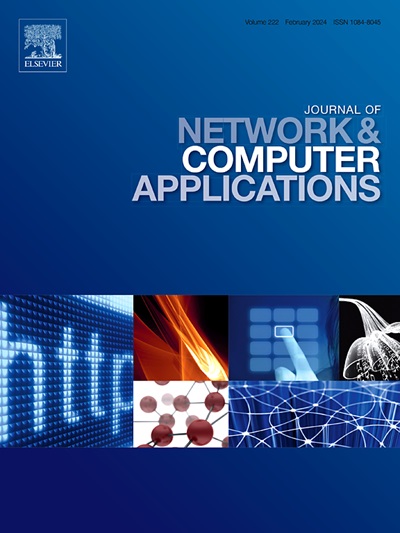Enhanced heartbeat protocol for near real-time coordinated spectrum sharing with expanded use cases
IF 7.7
2区 计算机科学
Q1 COMPUTER SCIENCE, HARDWARE & ARCHITECTURE
引用次数: 0
Abstract
The goal of Spectrum Access Systems (SASs) and similar systems that coordinate access to shared radio frequency bands is to fairly and efficiently allocate spectrum use amongst users in a locality such as a county. In the US 3.5-GHz Citizens Broadband Radio Service (CBRS) band, a SAS communicates with secondary users (SUs) of the band through protocols as defined by the US Federal Communications Commission (FCC) and Wireless Innovation Forum (WInnForum) to allocate spectrum and update each endpoint on the status of an SU’s granted channel within the band. These protocols include heartbeats that regularly inform an SU of their permitted status and alert them to Primary User (PU) activity requiring an SU to vacate their occupied channel. The heartbeat protocol maintains continuity of communication between the SAS and the SUs to exchange minimal types of information. However, the reliance on this limited message format, combined with a synchronous protocol that enforces response times on the scale of minutes, significantly restricts the system’s capability. This limitation excludes many use cases, such as those requiring near real-time adaptation, more extensive management of transmission parameters, or the delivery of information like backup SU channel assignments.
We propose an alternative heartbeat protocol named the Enhanced Heartbeat Protocol (EHP) that uses asynchronous messaging and a strategically extended message format to enable a much wider range of use cases, including support for fast-moving swarms of unmanned aerial vehicles (UAVs) or other high-mobility applications. Simulations demonstrate that this asynchronous protocol is scalable, providing rapid and reliable notifications to a large number of SUs. Additionally, the protocol’s performance degrades gracefully as the number of SUs increases, making it more robust under various conditions compared to the current standard. The goal of our EHP is to provide SASs with more up-to-date spectrum information, enable scalable centralized systems, and introduce additional parameters to increase the utility and flexibility of SASs in diverse wireless communication scenarios.
增强的心跳协议,用于扩展用例的近实时协调频谱共享
频谱接入系统(SASs)和协调共享无线电频段接入的类似系统的目标是在一个地区(如县)的用户之间公平有效地分配频谱使用。在美国3.5 ghz公民宽带无线电业务(CBRS)频段中,SAS通过美国联邦通信委员会(FCC)和无线创新论坛(WInnForum)定义的协议与该频段的二级用户(SU)通信,以分配频谱并更新每个端点在该频段内SU授予信道的状态。这些协议包括定期通知SU其允许状态的心跳,并提醒它们注意需要SU腾出其占用通道的主用户(PU)活动。心跳协议保持SAS和su之间通信的连续性,以交换最少类型的信息。然而,依赖于这种有限的消息格式,再加上同步协议(强制响应时间以分钟为单位),极大地限制了系统的能力。这种限制排除了许多用例,例如那些需要接近实时的适应,更广泛的传输参数管理,或者像备份SU通道分配这样的信息交付。我们提出了一种名为增强型心跳协议(EHP)的替代心跳协议,它使用异步消息传递和战略性扩展的消息格式来实现更广泛的用例,包括支持快速移动的无人机(uav)群或其他高移动性应用。仿真结果表明,该异步协议具有可扩展性,可为大量单元提供快速可靠的通知。此外,随着单元数量的增加,协议的性能会优雅地下降,使其在各种条件下比当前标准更健壮。EHP的目标是为SASs提供更多最新的频谱信息,支持可扩展的集中式系统,并引入额外的参数,以提高SASs在各种无线通信场景中的实用性和灵活性。
本文章由计算机程序翻译,如有差异,请以英文原文为准。
求助全文
约1分钟内获得全文
求助全文
来源期刊

Journal of Network and Computer Applications
工程技术-计算机:跨学科应用
CiteScore
21.50
自引率
3.40%
发文量
142
审稿时长
37 days
期刊介绍:
The Journal of Network and Computer Applications welcomes research contributions, surveys, and notes in all areas relating to computer networks and applications thereof. Sample topics include new design techniques, interesting or novel applications, components or standards; computer networks with tools such as WWW; emerging standards for internet protocols; Wireless networks; Mobile Computing; emerging computing models such as cloud computing, grid computing; applications of networked systems for remote collaboration and telemedicine, etc. The journal is abstracted and indexed in Scopus, Engineering Index, Web of Science, Science Citation Index Expanded and INSPEC.
 求助内容:
求助内容: 应助结果提醒方式:
应助结果提醒方式:


